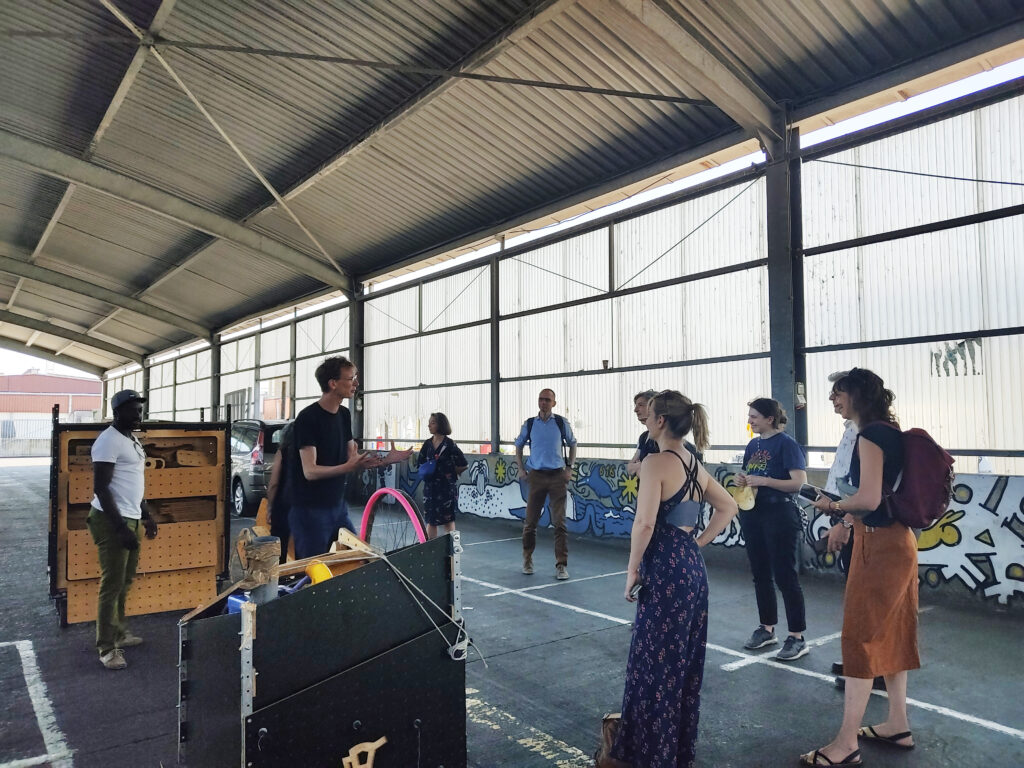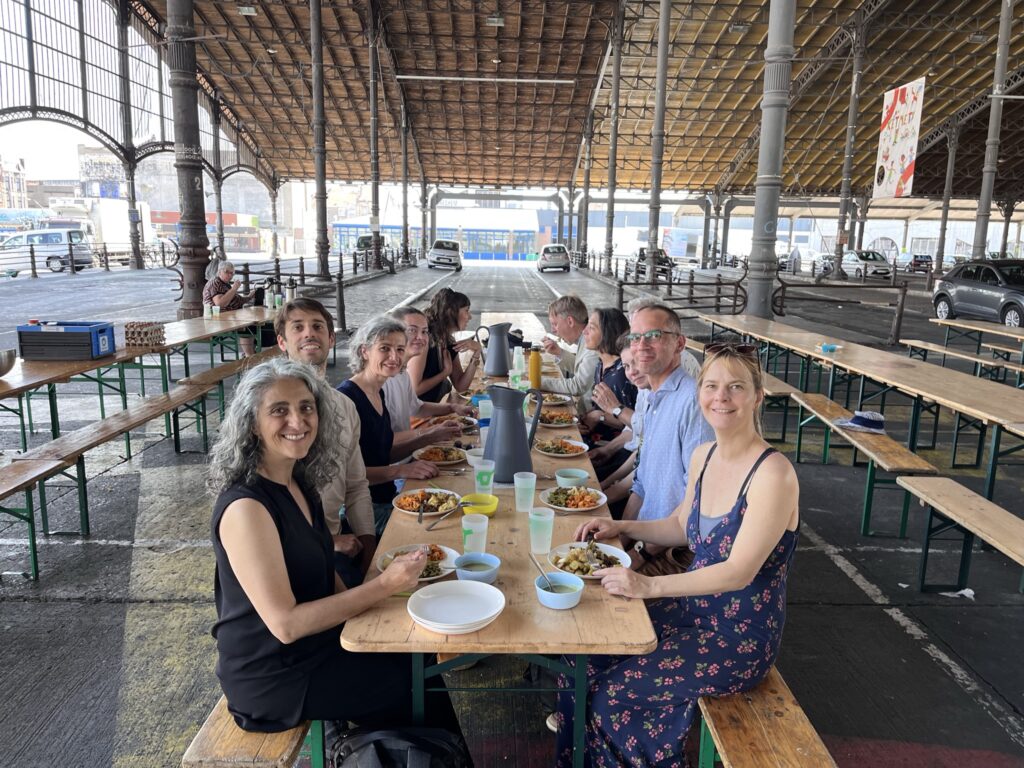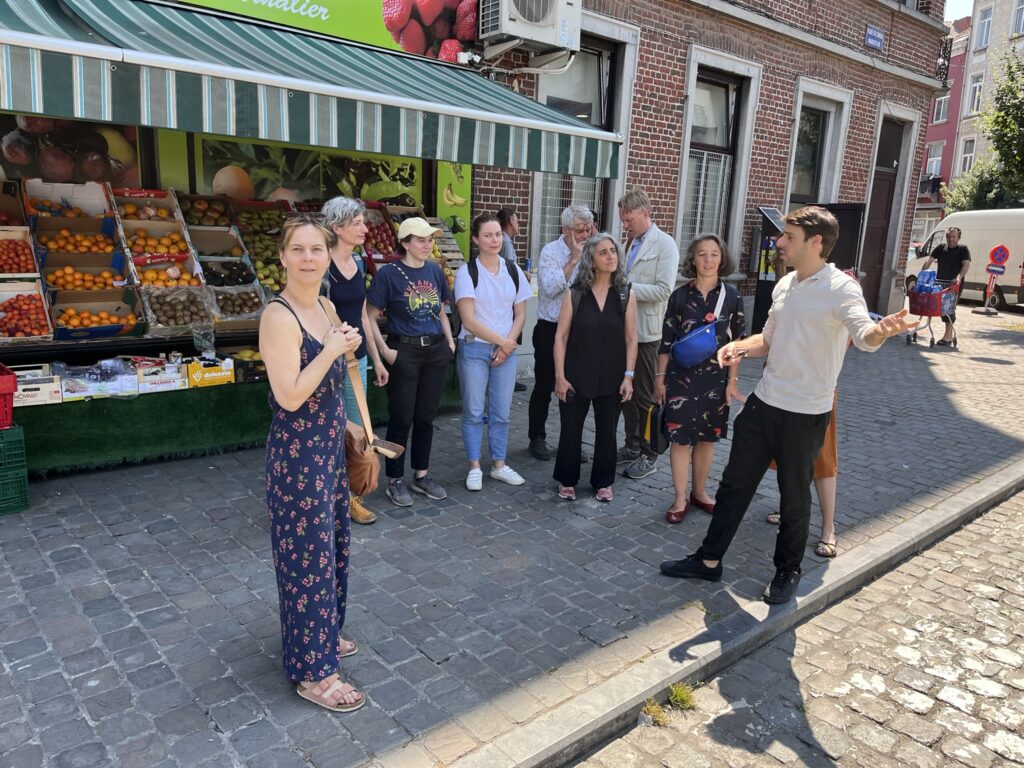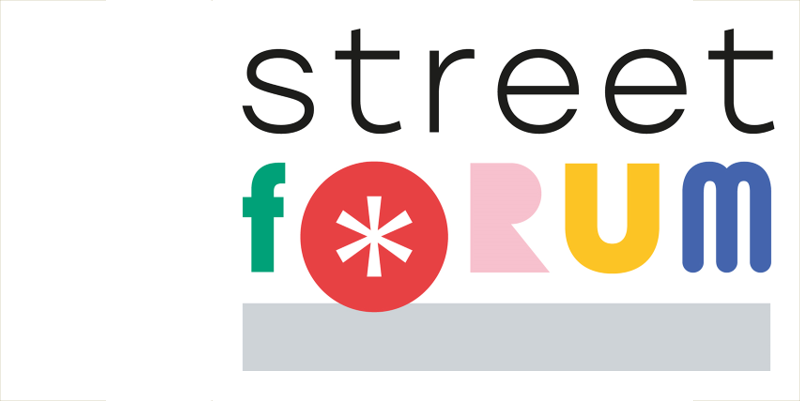What’s new?
StreetForum Living Labs
Living Lab Brussels: Révision
July 2024
The Living Labs have now started at the second Brussels location! Two of the three Wednesday Living Lab seesion have now been completed on the 3rd, and 10th respectively. Next week will mark the last Living Lab of Brussels for now.
On Wednesday 3rd of July, despite the rain and somewhat gloomy weather, various activities took place. Cultureghem’s tents and crêpe frying station created a cozy atmosphere at the junction of Boulevard de la Révision and Rue Eloy.
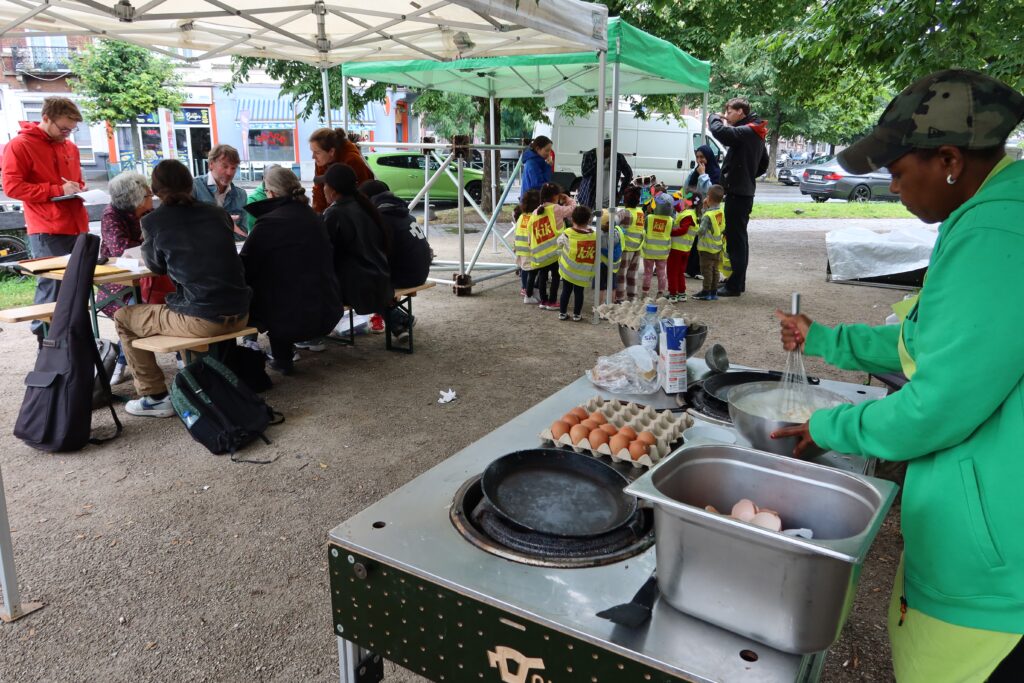
Under the tents, stakeholders were invited to participate in various activities. One of the tents was providing cover for people participating in the Design Game. Using a Révision-shaped game board, and various movable street elements, this game from StreetForum’s toolkit allowed the participants to discuss how their own street could be improved and changed.
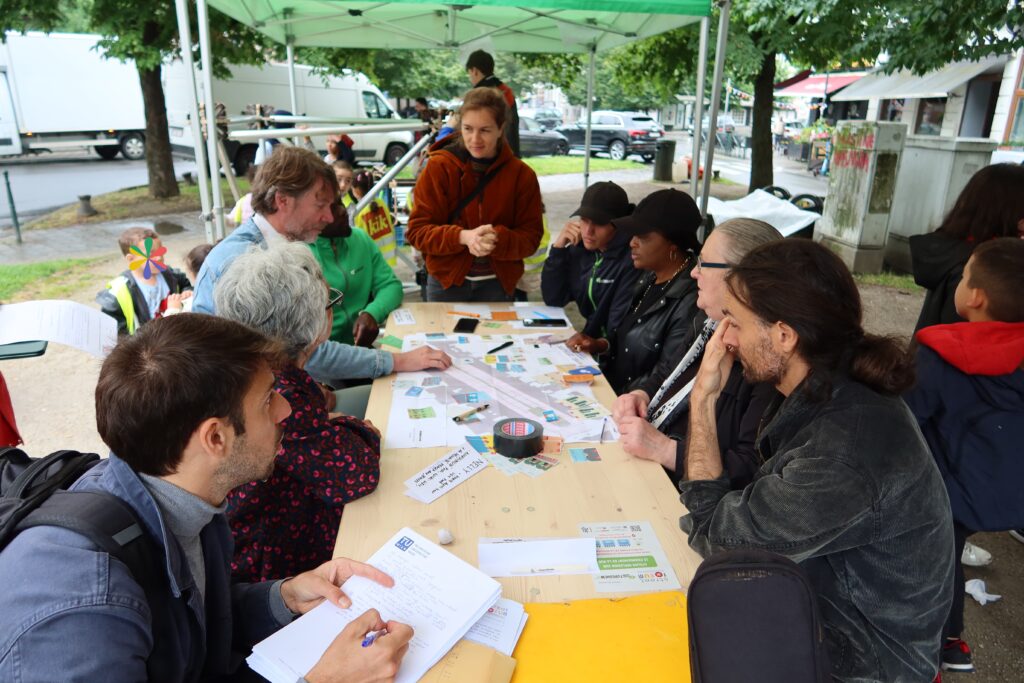
Simultaneously, numerous children were having a blast constructing the MoBil structures. The air was full of action and bustling, not to mention the smell of crêpes being fried.
For the 10th, the structure of the Révision Living Lab was changed a bit. The afternoon was started with the construction of a MoBil tower, this time by adult participants. StreetForum event banners were attached to the structure, and it was raised onto its feet to pique passersby’s interest.
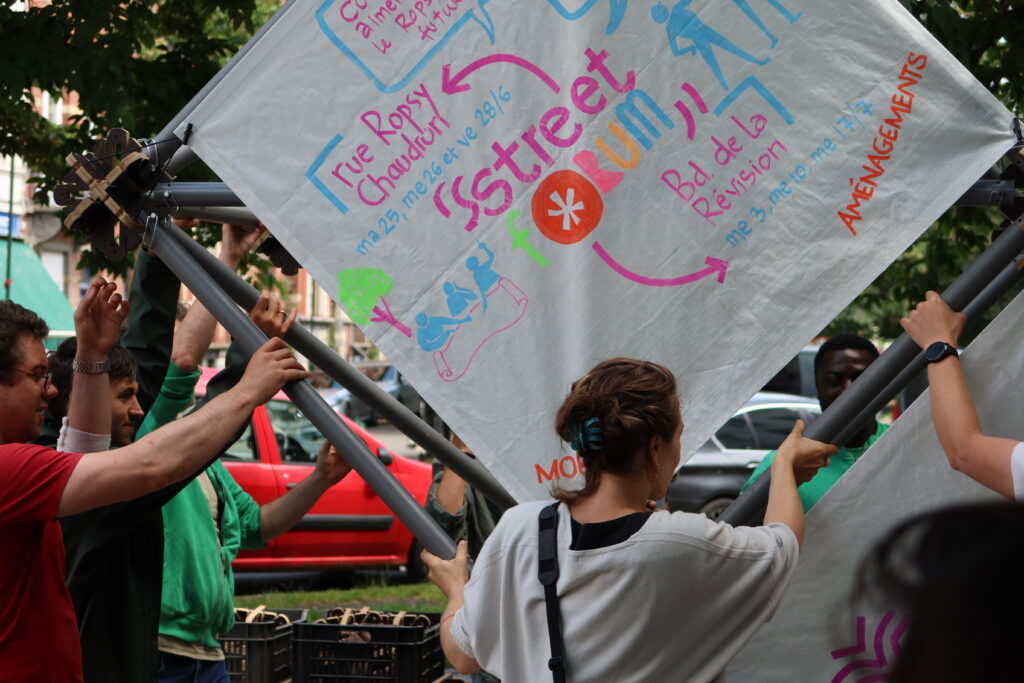
After breaking the ice with the MoBil, participants were invitied to play the Design Game. Some modifications to the game had been made since last week to improve the flow and contextual sensitivity of the game. The game was lively and engaging, and the stakeholder representation diversity was great to see.
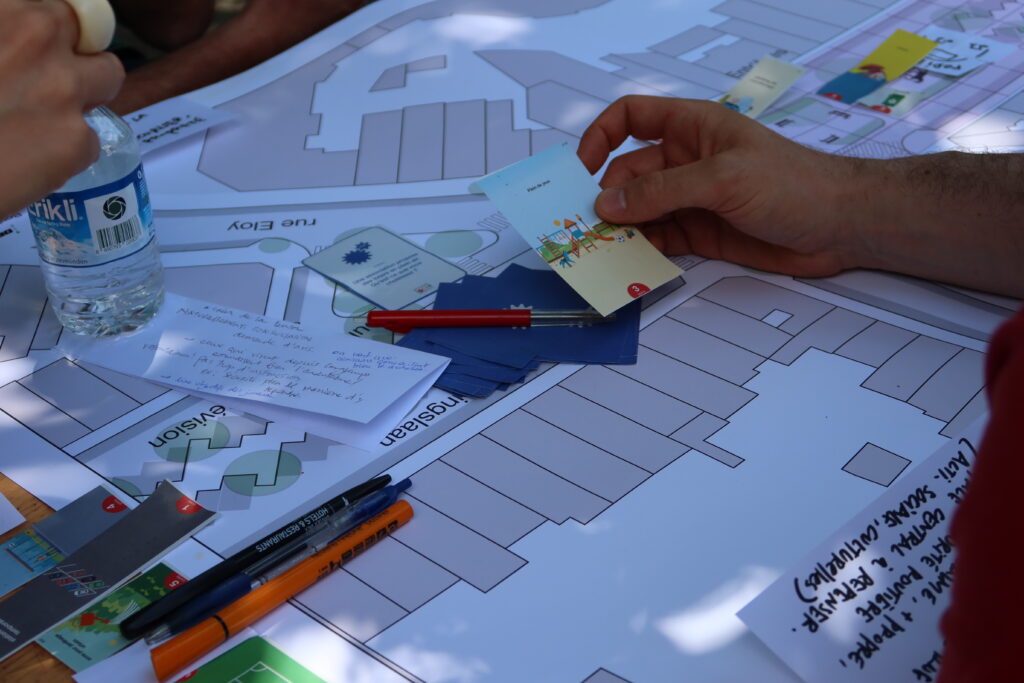
More action is still planned for the 17th, so let’s hope for some great weather!
photos: VUB
Living Lab Brussels: Ropsy Chaudron
June 2024
The first week of Brussels’ StreetForum Living Labs has successfully been carried out at the Ropsy Chaudron location.
On the 25th, 26th, and 28th of June, Cultureghem organised Living Lab events in the municipality of Anderlecht in Brussels. A selection of different StreetForum tools were used over these 3 days. Participants got to use the Storytelling game to describe their own experiences of Ropsy Chaudron. Storytelling took place on two of the Living Lab’s days.
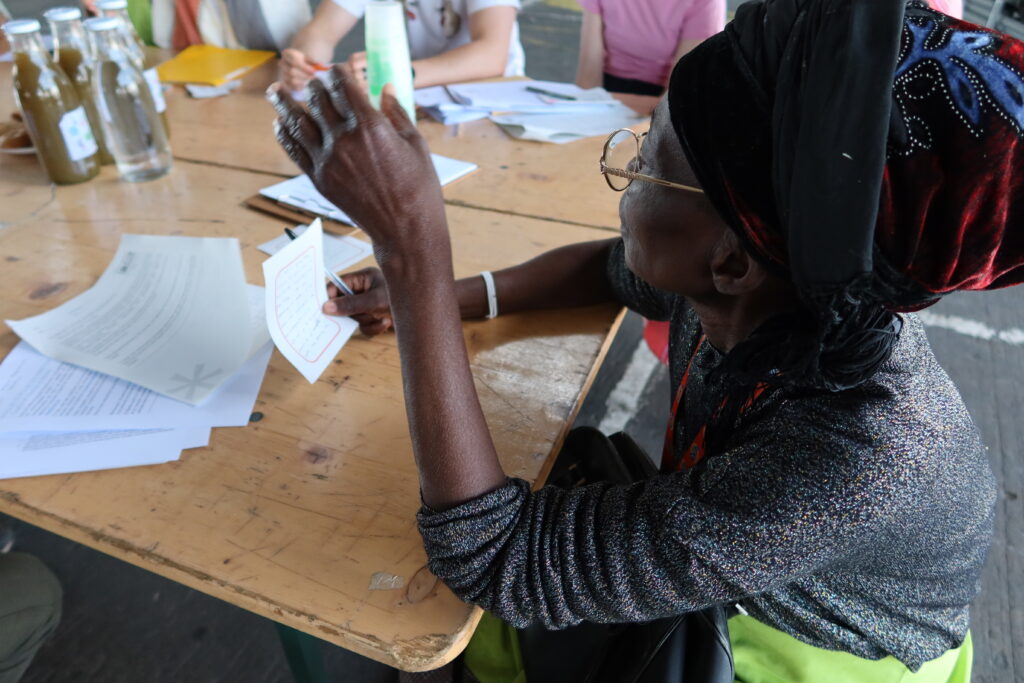
In addition to the Storytelling game, partakers had the chance to use the Placetoplan digital tool. This time, the tool focused on the Ropsy Chaudron Street of course, and participants had quite an easy time using the tool.
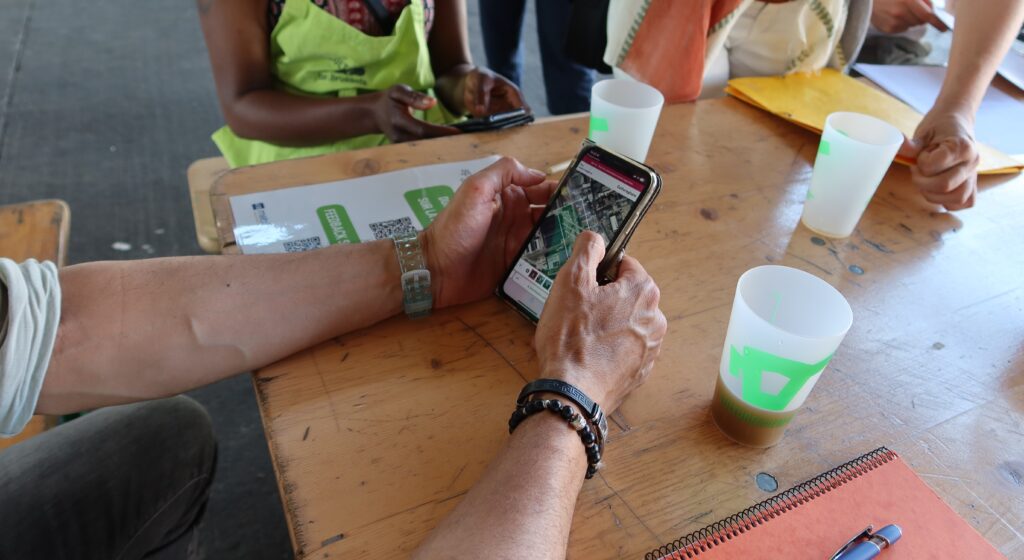
On Friday, the participants used the MoBil construction kit to create a simple structure. After the participants were ready with the frame, a canvas was attached to it. This canvas was then used as the surface for the next activity: rich picture.talk. The rich picture.talk especially was very successful, and invited lively conversation around the urban space. In fact, the participants became invested to such an extent that the activity was extended. This gave people the chance to keep the conversation flowing for a bit longer than what had originally been planned.
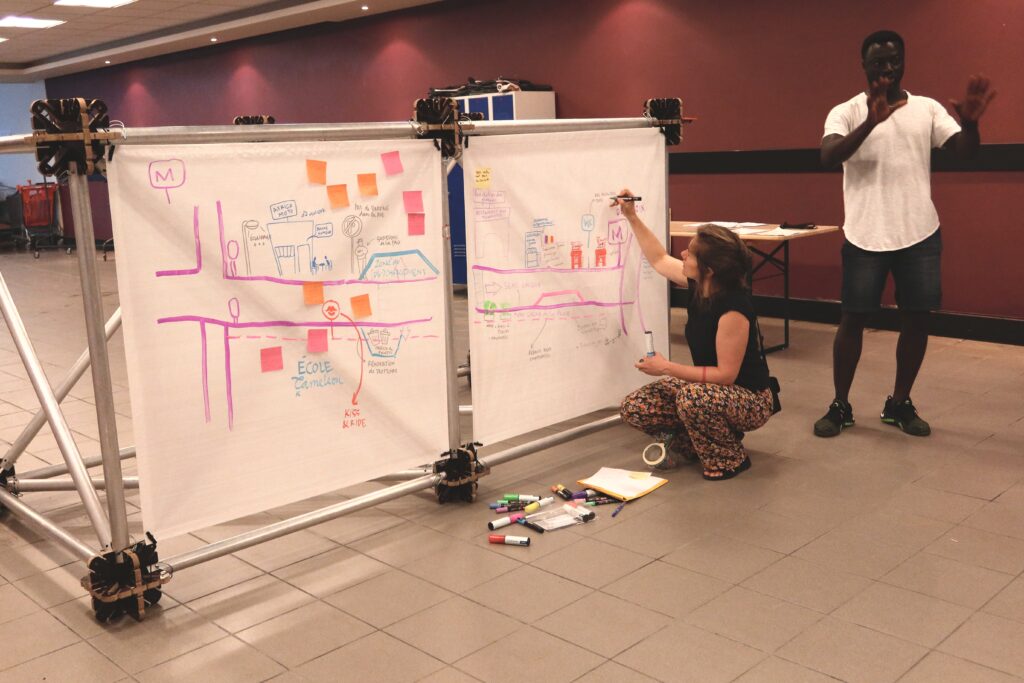
Even though Cultureghem and the VUB organised numerous activities, there is still more in store for Brussels. In July, the Living Labs will move to a slightly different location – the Boulevard de la Révision! Over the next few Wednesdays (3rd, 10th, and 17th of July) more activities will be carried out there.
photos: VUB
The activities of 2024 have just begun
June 2024
As summer begins, the StreetForum living labs are kicking off their activities.
The Istanbul Living Lab hosted two days of on-street events on May 22nd and 23rd at Yoğurtçu Park Street. They tested several StreetForum tools, including Art Interview, Co-Design Game, Stakeholder Personas, Mobil, and Streetmeter.
The Vienna Living Lab started its activities for the year on June 5th in Lambertgasse, and the StreetForum consortium participated in the event.
The Brussels living lab will begin its activities on June 24th, while the activities in Stockholm are scheduled for the end of September.
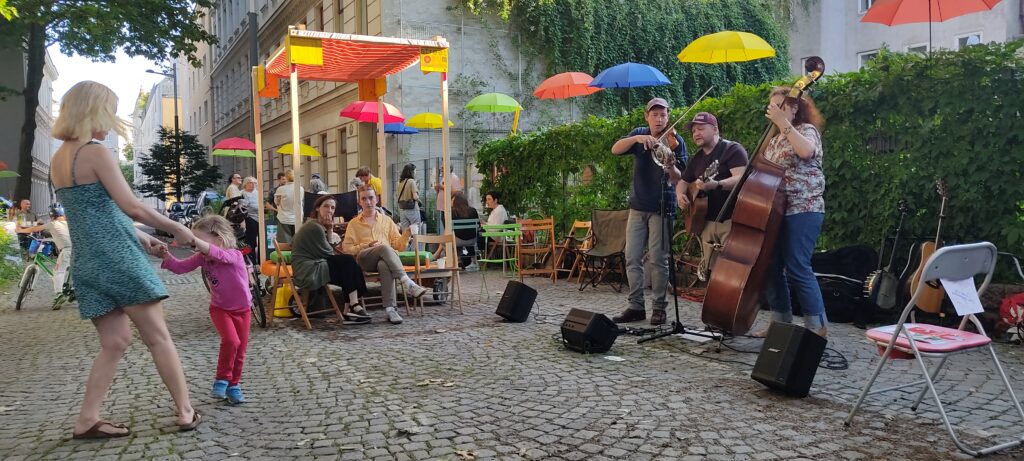
Concert in Lambertgasse, 5 June 2024
Living Lab Vienna: #residentialstreetlife in Rahlgasse, Vienna
October 2023
In October 2023 the culture and research organisation “space and place” conducted two #residentialstreetlifes in Rahlgasse at the Living Lab Vienna. In contrast to the second focus street of StreetForum called Lambertgasse (see article below), the inner district street Rahlgasse is rather busy, mainly due to three cafés and a high school located there. Also, it is close to a metro station and right to the highly frequented pedestrian street Mariahilfer Straße.
#residentialstreetlife is a tool in which residential streets (Wohnstraßen) are activated through a variety of activities in the sense of “Tactical Urbanism” (Lydon/Garcia: 2015) and “Placemaking” (Jacobs: 1961, Whyte: 1980) with colourful chairs, tables and deckchairs forming the basis to transform the street into a “public living room”. On residential streets cars are only allowed to drive in and out in walking speed but not to drive through, whereas people are allowed to spend time directly on the street, e.g. to play or to set up chairs and tables.
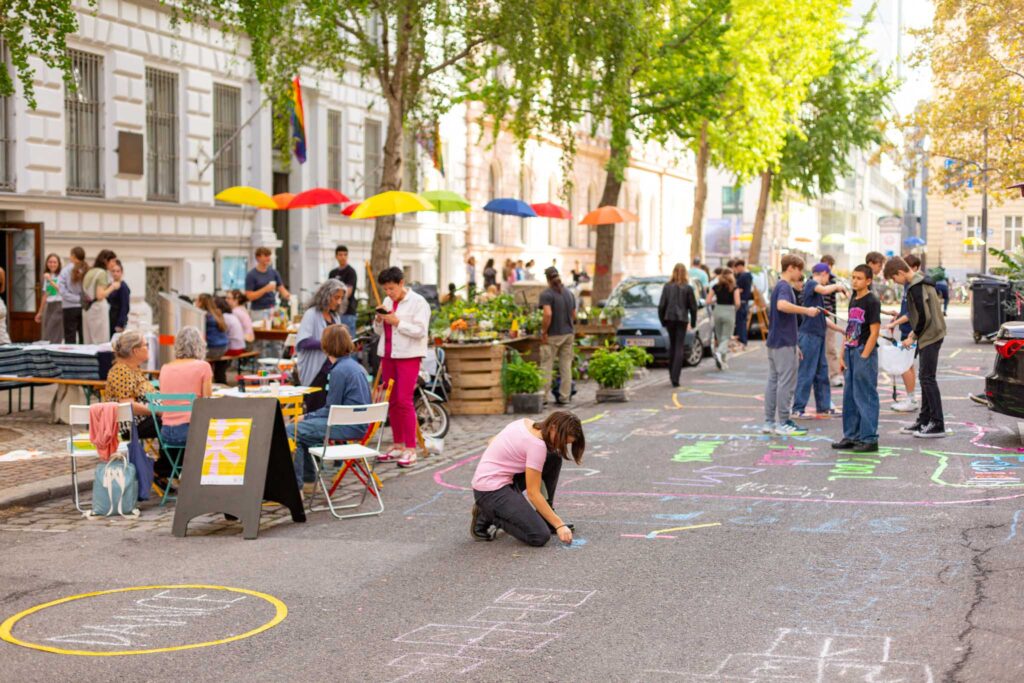
In the run-up to the #residentialstreetlife, “space and place” distributed flyers and put up posters which informed about the research project and the two #residentialstreetlifes. While handing out flyers, “space and place” met multiple residents and business owners. The principal of the school was very much drawn to the idea of transforming the street and promised to support “space and place”.
At the first #wohnstrassenleben on Thursday, October 12, the focus was on celebrating the residential street itself and showing all the possibilities one has on it. As part of art and culture activities, visitors could design the street with colourful tapes. Passers-by as well as residents were attracted to the #residentialstreetlife because of the umbrella installation by Alain Tisserand as well as the music played by a DJ. People shared their ideas for the street on a post-its wall. Also, coffee, cake and small snacks were offered. Another important contribution to the #residentialstreetlife was done by a client of the “Gruft”, a local social center for homeless people, who offered beautiful plants for voluntary donation.
On this day a lot of local politicians visited the #residentialstreetlife and participated in it. They chatted with participants and also proposed ideas for the street which they wrote down on the post-its wall.
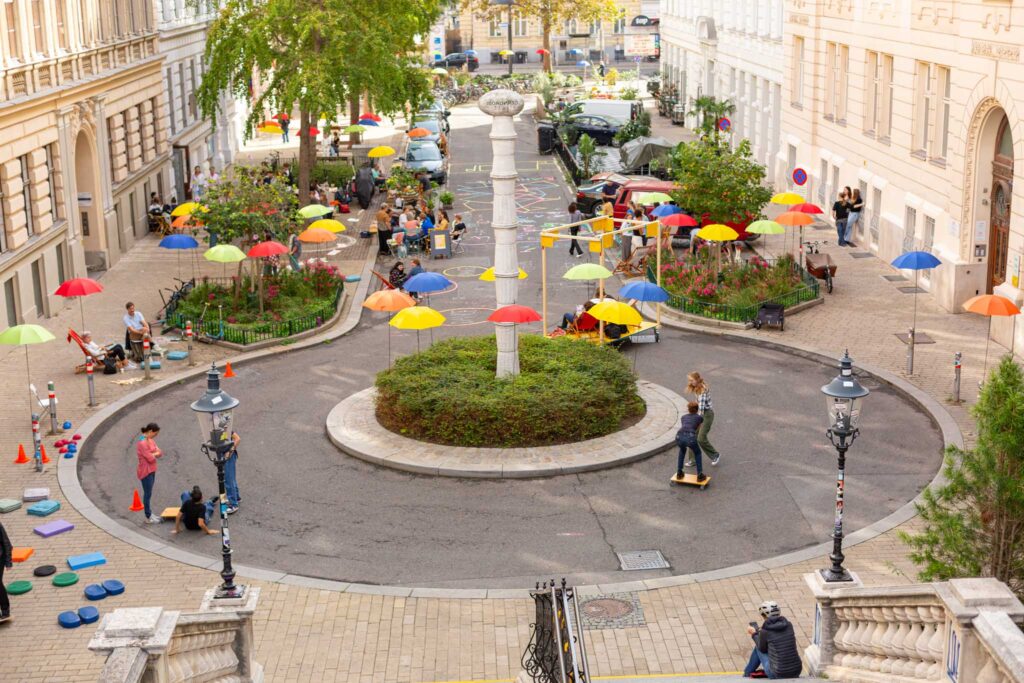
At the second #residentialstreetlife the next day, “space and place” focused on the theme “Playing”. There were board games and street games ready. The public space was again marked with furniture and there was coffee and cake. “space and place” also applied the tool “Keep the Balance”, a sociocracy game with questions developed by “space and place” that focused on local challenges. The game was played three times in a row with different students from the local school and revealed a lot about the challenges and ideas of the students when it comes to the use of the street. Additionally, one could play an “AR Design Game” by the TU Vienna, in which one can playfully slip into different roles and discuss, amongst other things, structural changes on the residential street. Also, the “cariage”, a mobile platform by Alain Tisserand, was available and highly frequented and moved around.
Furthermore, the school offered different activities: A biology teacher invited people to play the “garbage game”, and there were sports activities with different balancing objects and mobile boards. On both days students organized a fundraiser for the school prom, where they offered cakes and cookies for voluntary donation.
The activities were well received. On the first day “space and place” attracted more adults while on the second day there were more children present due to the collaboration with the school. All participants appropriated the public space and most notably the middle of the street. Especially the children showed their right to the city by marking the street with street tapes and demanding that there should not be any cars in the street anymore.
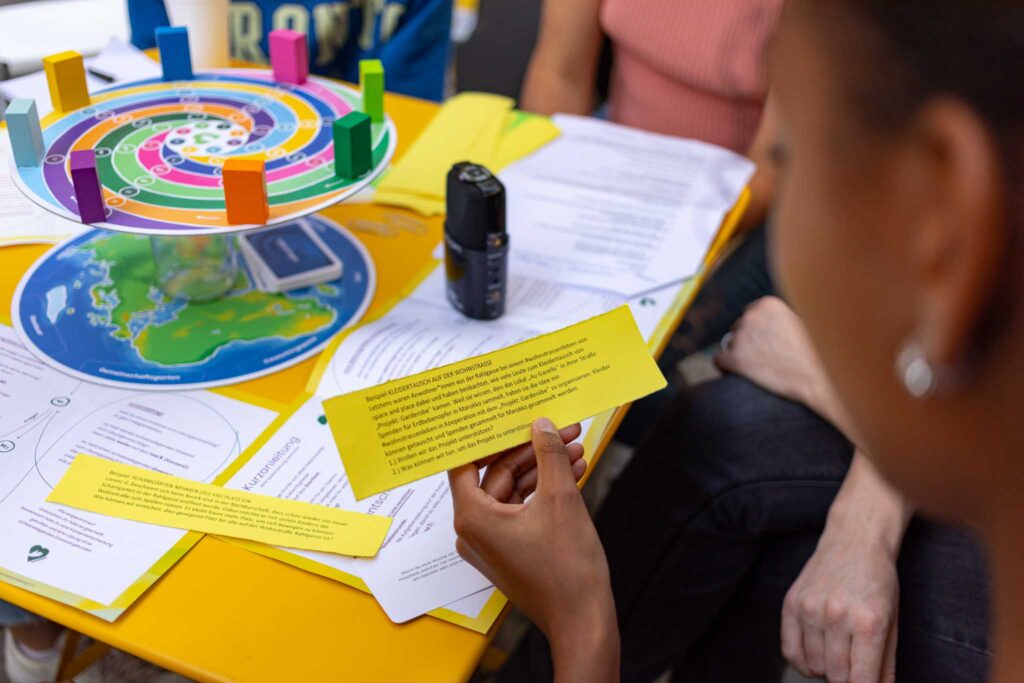
©photos copyright Ákos Burg
Living Lab Vienna: Meeting with Community Gardeners
September 2023
In Lambertgasse, one of the two researched streets in the Living Lab Vienna, there is a community garden. Before our #residentialstreetlife in 2023 (see article below) the culture and research organisation “space and place” from time to time met some gardeners to discuss what they could do to revive and transform the residential street. In September 2023 a meeting was held with five gardeners plus two representatives from “space and place”, the architect Alain Tisserand and a local representative of the “Gebietsbetreuung” (office for urban renewal funded by the city administration).
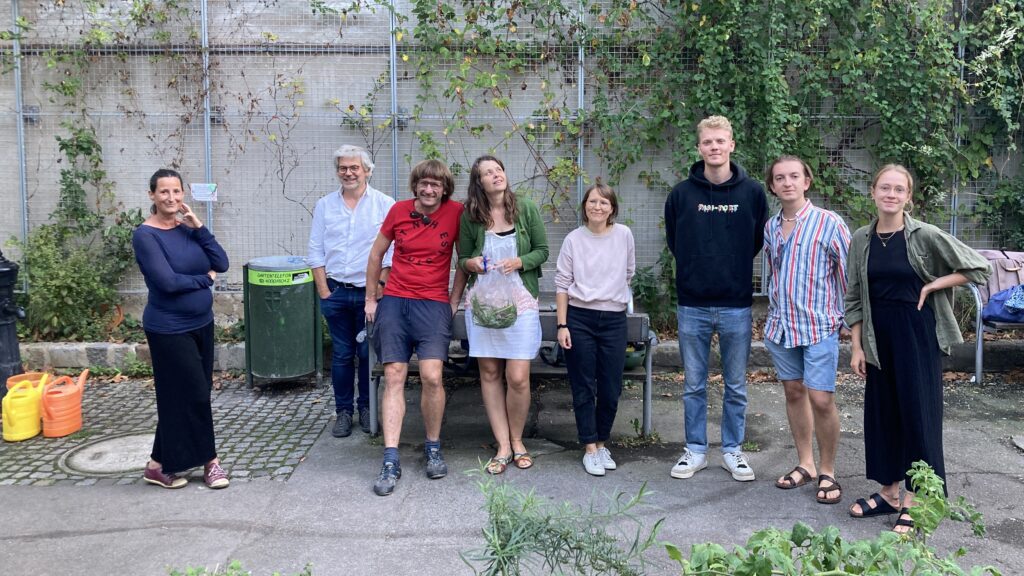
It quickly became clear that the question of changes in the residential street could only be addressed if the situation at the community garden is considered. For example, sometimes young men meet there that are quite noisy and keep others from using the garden. Such groups also leave waste on the floor and directly in the plant beds. Therefore, the discussion first centered around this topic and attendants were not as much interested in transforming the street.
But then, one gardener thought that it would be best to directly involve these young men in future transformations so that they feel a responsibility for the space. This seemed a good idea, even though the access to these men could be quite a challenge.
But it is not just young men that use the garden besides the community gardeners. Turkish women often sit in the park and apparently, they also help to water the plants in summer when not all gardeners are in town. One gardener therefore suggested to have social workers that come and involve these women more.
Slowly the discussion moved out of the garden and into the street. One person came up with the idea of setting up a parklet to make the space more attractive for actual use by pedestrians. Another person stated that it would be important to make the street more livable especially by calming traffic (cars usually drive through at more than 30 km/h instead of the allowed 5 km/h). Together with her “space and place” thought about whether this could be solved by repeatedly equipping the roadway with various elements (seating, plants, etc.). The group also talked about putting seating on the street as well as making it greener, and organizing activities. Despite the particular problems that the gardeners encounter on a daily basis, they are open to the idea of focusing more on the transformation of the residential street.
“space and place” explained that there are different opinions about the Lambertgasse, as many people would prefer for the street to stay as it is, because they are afraid that it will get even louder after a transformation. Some gardeners, on the other hand, could even imagine getting rid of the fence at least partially to open up the garden to the street. Further ideas that were discussed: to hang up a blackboard to share ideas and event dates or to have a movie screening on a wall on one side of the park. On a final note, the group discussed Alain Tisserand’s idea of building (temporary) platforms in the street below the trees or to put a greened car or bike in the street.
Overall, the meeting proved quite fruitful, and everyone saw that there are ways of transforming the residential street together with the garden into a space where people like to meet.
© photo copyright “space and place”
The first rapid street transformation has been inaugurated in Umeå
September 2023
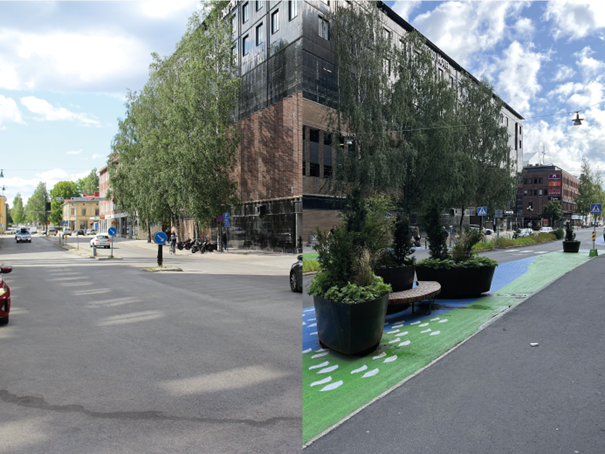
Umeå in northern Sweden is the first city to implement the rapid street transformation developed within the Vinnova-funded project Future Streets and will be studied in the new research project StreetForum. Storgatan, a main street running through the city center, now has a new look.
In two citizen dialogues, the residents of Umeå expressed their desire for more space for pedestrians and cyclists and less for vehicular traffic, along with an overall more pleasant green street environment. Taking this as a starting point, Spacescape, Edge, Norconsult and the municipality of Umeå collectively developed a design concept with the guiding principle of “the green thread,” with an underlying idea of highlighting the connection to the cultural center “Väven” (the Fabric). A big thank you to project leaders Katarina Gref and Axel Thorén at Umeå municipality for demonstrating how we can quickly and cost-effectively transform the city’s streets.
Previously, Storgatan consisted solely of wide lanes for vehicles and narrow sidewalks without any other features. It has now received a new two-way bicycle lane, greenery in planting beds and the median strip, benches, and a vibrant ground mural.
Close communication with the city’s contractor allowed for explanations and adjustments to the design as needed. During the construction phase, Umeå municipality was actively present on the street, fine-tuning the placement of flowers and benches based on what worked best on-site. Given that both the approach and material choices were new, this flexibility was of great assistance.

Local media has covered the project, and the municipality has received both criticism and praise, reflects project leader Katarina Gref.
Storgatan also received attention during the summer dialogue about the nearby square Renmarkstorget:
“It would be good if there was a continuous bike lane from Skolgatan to the new stylish bike path on Storgatan.” Woman, 40-49 years old
“Why not paint the square, something artistic like Storgatan. I think we need some color in our lives.” Woman, 70-79 years old
The dialogue revealed a significant need for a bicycle lane, although some still habitually ride on the sidewalks. It takes time for changes to take hold, but it’s clear that this simple and cost-effective type of transformation allows the bike network to expand and connect at a much faster pace than otherwise, paving the way for a comprehensive renovation gradually.
Greenery was also a highly demanded improvement on this stretch. An innovation that proved successful was a simple type of planting where concrete slabs in the median strip were replaced with sand and flowers, quickly giving the street a softer and greener character.
Now, post-measurements are awaiting to study the impact of the changes on flows and the overall environment.
Living Lab Vienna: #residentialstreetlife in Lambertgasse
July 2023
On July 7 and 8, 2023, space and place conducted two #residentialstreetlifes (in German: #wohnstrassenleben) at the Living Lab Vienna. This tool, developed by space and place in 2018, consists of activities in the sense of “Tactical Urbanism” (Lydon/Garcia: 2015) and “Placemaking” (Jacobs: 1961, Whyte: 1980). Residential streets, which are otherwise only used by cars, are used legally within the framework of the traffic regulations. And because hardly anyone in Vienna does this, this “spectacle” seems unusual at first glance.
On the residential street Lambertgasse in Vienna’s 16th district, the tool #residentialstreetlife should now be tested for the first time in the context of StreetForum. This in connection with the negotiation of different interests in the context of a possible transformation of the street. This residential street is very quiet, there are only residential houses and no stores or pubs.
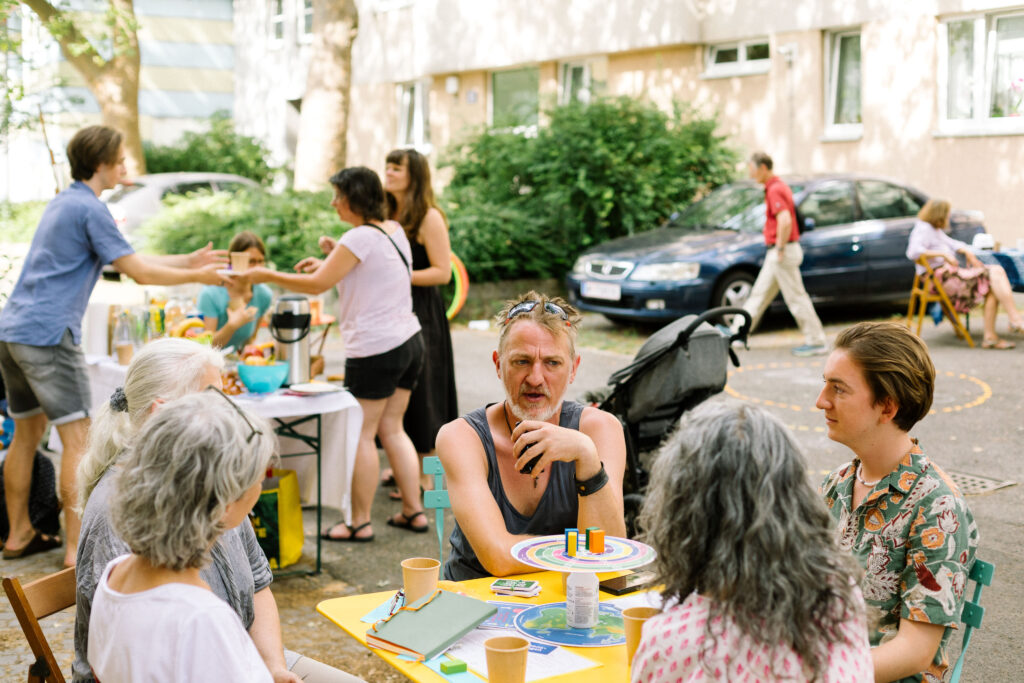
In the run-up to the #residentialstreetlife, we distributed flyers to residents and put up posters. These informed about the research project and the two #residentialstreetlifes. While we handed out flyers, we came into contact with residents, most of whom were interested in our activities or were even willing to bake a cake for our “party”. About a week before the activities, two team members sat down in a free parking space with a folding table and chairs and talked to passers-by. This anthropological approach again allowed us to introduce our research project StreetForum and the planned activities in the Living Lab.
At the first #wohnstrassenleben on Friday, July 7, the focus was on showing what is possible on residential streets without further permission: A DJ put on music at a volume compatible with the location and “dance islands” were marked with tapes on the ground in front of the DJ table. As part of our art and culture activities, visitors could also take tapes and design street sections for themselves. With colourful tables, chairs and deck chairs, the residential street was transformed into a cosy public space. Residents came, curiously asking the “reason” for the activities, drinking coffee with us and chatting with each other. Statements about ideas and visions for the residential street Lambertgasse could be recorded on a post-it wall. These contributions, as well as the conversations will feed into the participatory research activities and subsequent analyses.
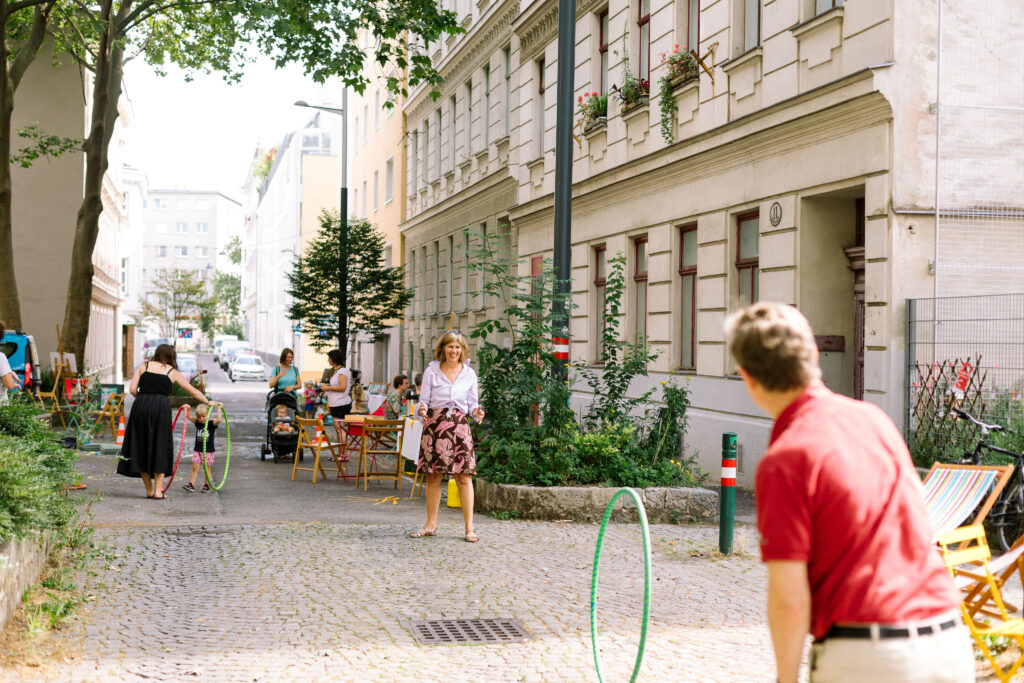
The second #wohnstrassenleben on Saturday, July 8, was themed “Playing”. There were board games and street games ready. Also, the public space was again marked with furniture as a special space and there was coffee and cake, especially baked by a neighbour. For the sociocracy game “Keep the Balance” space and place developed questions that focused on local challenges based on initial encounters on the residential street Lambertgasse. During the game, it was possible to discuss, among other things, issues of spatial justice on residential streets. The specific wish of installing a bike station on the residential street could be discussed or a vote could be taken on the extent to which #residentialstreetlife should be organized independently by local actors in the future. The “AR Design Game” of the TU Vienna was also presented, in which one can playfully slip into different roles and discuss, among other things, structural changes on the residential street.
On both days, the activities were well received, and some people stayed for a long time, playing and talking. Especially children quickly lost their shyness to move around in the middle of the street. Good conversations arose about neighbourhood and wishes for the public space residential street. We were able to test the first tools, conduct individual interviews about them, and make audio recordings of a specific play session for research purposes.
We were surprised to experience so much interest and spontaneous participation in our research on these two days and in a quiet Viennese outer district through our flyer activities and the #residentialstreetlife tool. And we hope that even more people will participate in future #wohnstrassenleben. We are curious to see how the situation will be in October in the second Vienna Living Lab in the residential street Rahlgasse, which is located in a busier inner district and where we will design two more #residentialstreetlife.
Contribution from spaceandplace.at | fotos copyright Ákos Burg
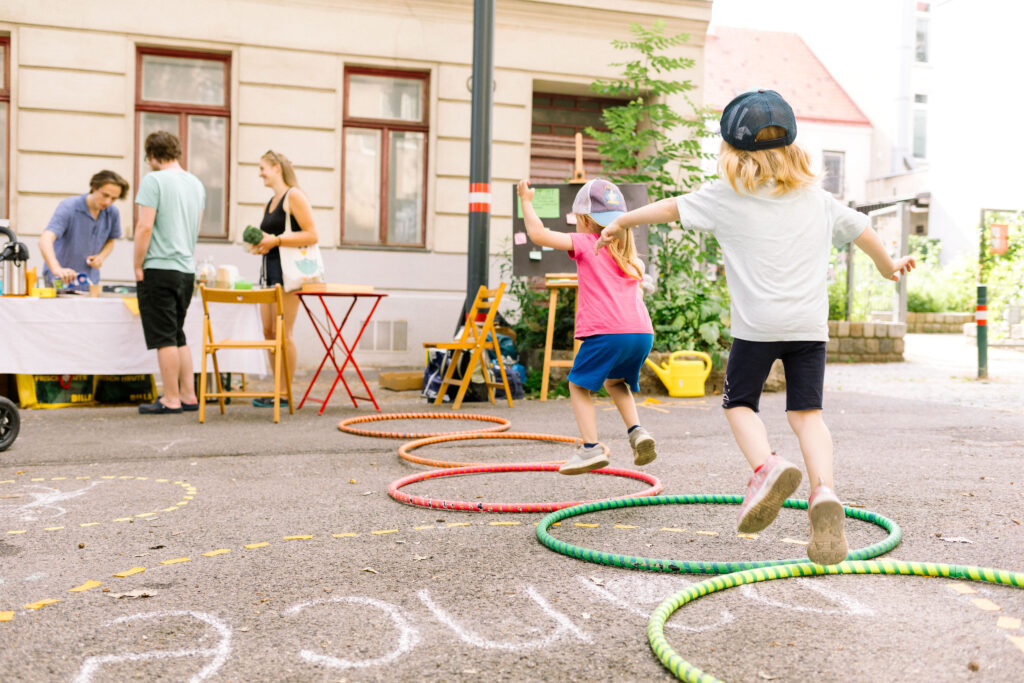
First consortium meeting in Brussels
June 2023
The StreetForum project started in March 2023, and the first physical consortium meeting took place on the 12th and 13th of June in Brussels.
The project team visited the living lab in Kuregem, Les Abattoirs market and Cultureghem, one of the local partners, presented the tools they are developing, as can be seen in the picture.
